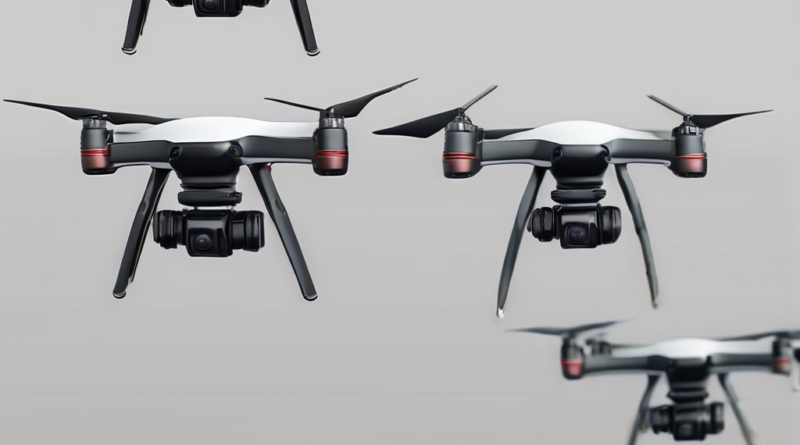Drones in Search and Rescue Missions
Drones in Search and Rescue Missions: A Modern Solution to Age-Old Challenges
In recent years, the advent of drone technology has revolutionized various sectors, from agriculture to filmmaking.
Among these transformative applications, one of the most significant is the use of drones in search and rescue missions.
These unmanned aerial vehicles (UAVs) have proven to be invaluable in saving lives, providing rapid response capabilities,
and accessing areas that were once deemed unreachable. In this blog post, we delve deep into the role of drones in search
and rescue missions, exploring their benefits, challenges, and real-world applications.
Understanding the Role of Drones in Search and Rescue
Drones, equipped with advanced technology, offer a bird’s-eye view and the ability to cover large areas swiftly.
They play a crucial role in search and rescue operations by providing real-time data, reducing
response times, and enhancing the safety of rescue personnel.
The Advantages of Using Drones
The integration of drones into search and rescue missions offers numerous advantages. Firstly, drones can be deployed
quickly and operated in environments that are hazardous for humans. According to a report by the National Institute
of Standards and Technology, drones can reduce search times by up to 50% in certain scenarios.
Moreover, drones are equipped with high-resolution cameras, thermal imaging, and GPS capabilities, which allow rescuers
to locate victims more efficiently. The ability to hover and navigate through difficult terrains further enhances their utility.
Real-World Applications: Success Stories
There have been numerous instances where drones have played a pivotal role in saving lives. For example, during the
2018 floods in Kerala, India, drones were used extensively to deliver food and medical supplies to stranded individuals.
In another instance, drones equipped with thermal cameras helped locate a lost hiker in the dense forests of Colorado.
These examples underscore the potential of drones to be life-saving tools in emergency situations.
Challenges and Limitations
Despite their advantages, the use of drones in search and rescue missions is not without challenges. One significant
limitation is battery life. Most drones have a limited flight time, which can be a hindrance during prolonged search
operations. Additionally, adverse weather conditions such as strong winds and rain can affect drone performance.
Regulatory and Ethical Considerations
As with any emerging technology, the deployment of drones in search and rescue missions raises regulatory and ethical
concerns. There are strict regulations regarding drone flights, especially in populated areas. Furthermore, privacy issues
arise when drones are used in public spaces.
Rescue teams need to navigate these regulations carefully to ensure that their operations are both legal and ethical.
Check Prices On Amazon
Actionable Tips for Implementing Drone Technology
For organizations looking to integrate drones into their search and rescue operations, here are some actionable tips:
Invest in Training
Proper training is essential for effective drone operations. Organizations should invest in training programs that
cover both the technical and operational aspects of drone usage. Operators need to be familiar with drone controls,
maintenance, and troubleshooting.
Choose the Right Equipment
Not all drones are created equal. It is important to select drones that are specifically designed for search and rescue
missions. Key features to look for include long battery life, thermal imaging capabilities, and rugged build quality.
Develop Standard Operating Procedures
Having clearly defined standard operating procedures (SOPs) can streamline drone deployment during emergencies.
These SOPs should outline the steps to be taken from the moment a call for assistance is received to the execution
of the rescue mission.
Conclusion
The use of drones in search and rescue missions represents a significant advancement in emergency response efforts.
By offering rapid deployment, enhanced visibility, and reduced risk to human life, drones have proven to be invaluable
in various rescue scenarios. However, to fully harness the potential of this technology, it is crucial to address the
challenges and ethical considerations associated with their use.
As technology continues to evolve, the future of search and rescue missions will likely see even greater integration of
drones, leading to more efficient and effective rescue operations. By staying informed and prepared, rescue organizations
can leverage this technology to save more lives and make a positive impact in their communities.

